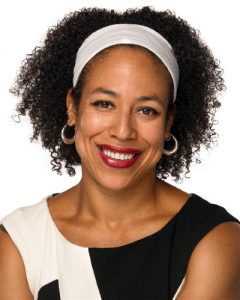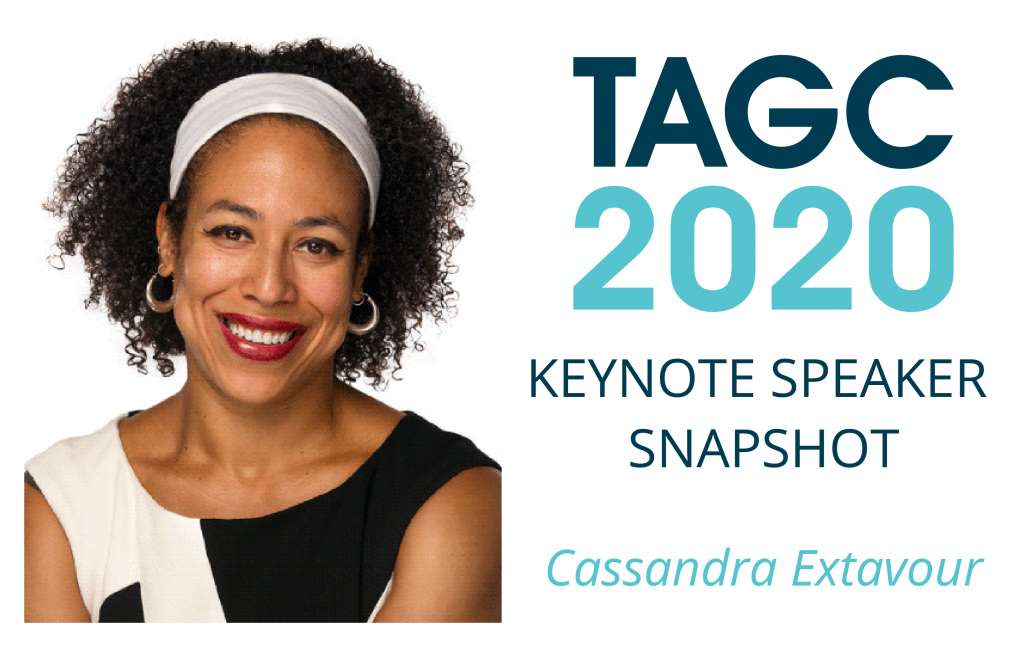Get to know the TAGC 2020 Keynote Speakers through our interview series.

Cassandra Extavour
Cassandra Extavour obtained an Honors BSc at the University of Toronto with a specialist in Molecular Genetics and Molecular Biology. She obtained her PhD with Antonio Garcia Bellido at the Severo Ochoa Center for Molecular Biology at the Autonomous University of Madrid. She performed postdoctoral work first with Michalis Averof at the Institute for Molecular Biology and Biotechnology in Crete, Greece, and subsequently with Michael Akam at the University of Cambridge. At Cambridge she received a BBSRC Research Grant and became a Research Associate in the Department of Zoology. In 2007, she established her independent laboratory as an Assistant Professor in the Department of Organismic and Evolutionary Biology at Harvard University, where she was promoted to Associate Professor in 2011 and to Full Professor in 2014. She has received numerous honors and awards and has been nominated for the Joseph R. Levenson Memorial Teaching Prize and the Harvard Graduate Women in Science and Engineering Mentoring Award. The Extavour laboratory is interested in understanding early embryonic development, the genes that control this development, the evolutionary origins of these genes, and how their functions have changed over evolutionary time.
What research are you most excited about right now, and why?
I’m excited about research in genetics that tries to bring together our understanding of the function and evolution of genetic control systems across multiple scales of biological organization. An example might be the genetic circuits that control the shape of cells within a multicellular group—and how those individual cell shapes get connected and propagated to result in changes in the shape of the whole group of cells. Another example is investigating how the action of individual genes in a gene regulatory network is parallelled across branches of the evolutionary tree of life—and how genetic regulatory interactions in one lineage of the tree of life can be used to predict how interactions work in other lineages.
I’m interested in these cross-scale studies because I think this is the only way we’re going to move toward a comprehensive understanding of the evolution of these genetic systems; the one-by-one, gene-by-gene, cell-by-cell approach is critical, but it can’t be the only approach. It was so fruitful for the last half of the last century, but now systems-level, global genomic-level, and population-level data are becoming possible to generate and analyze, which can move us beyond what was possible last century.
What do you like about working with flies and other insects?
There is no better genetic manipulation system in an animal than in Drosophila melanogaster. No other animal can be manipulated genetically with the same precision and control, so for someone who wants to work on the genetic control of obligately multicellular systems, it’s the best model.
From a comparative evolutionary point of view, the genus Drosophila is large as far as insects go. It’s as old as many other genera, but it’s experienced a lot of rapid radiation. It has several thousand species, and at least a thousand of those evolved, we think, from a last common ancestor within the last few tens of million years ago, which is extremely quickly. There is a huge amount of species diversity, genetic diversity, and morphological diversity ranging from very recent evolutionary timescales to much older evolutionary timescales just within the genus Drosophila, which is also very appealing to me.
Is there anything about yourself or the field that made you feel like you didn’t belong in science? What would you say to early career scientists struggling with the same feeling?
Absolutely: being a woman in a male-dominated field, being black in a white-dominated field, being gay in a heteronormative-dominated field. I feel like I belong, but on a daily basis, I’m reminded that not everybody thinks that.
What I would say to early career scientists is that feeling fascinated by genetics and wanting to be a geneticist means that you belong in genetics—but it’s a reality that not everyone you encounter in your career is going to share that view. Academia—scholarly research of any kind, including science—is a very conservative profession with narrow definitions of success, belonging, and what it takes to participate in and contribute to the field.
What I recommend to early career researchers is that they work on developing and strengthening as many different resources as they can in their lives to remind them that they have a right to do and pursue whatever they want to—because they may not always find that support within the genetics field.
TAGC aims to foster collaboration between communities and disciplines. Can you give an example of a collaboration that really helped your work?
In the last few years, we wanted to expand beyond Drosophila melanogaster into looking at the biology and genetics of Drosophila species endemic to the Hawaiian islands. What was critical to the success of that work was establishing great collaborations with scientists working in Hawaii who knew the ecology and the biology of the animals and plants that are native to those island systems and who were willing share their knowledge with us, helping us understand the ecological context of these files. That’s the only way—not only to literally find and catch the flies so you can study them—but to make sense of the biology and genetics of those flies. When you want to branch into new areas of zoology and explore new habitats in the world, collaborations with people who know the biology give you context to understand the genetics you’re interested in. So that’s been a very successful collaboration, and we’re very grateful to Karl Magnacca, Steve Montgomery, Ken Kaneshiro, and Don Price. They’ve been working with these flies in Hawaii for many years, and they were absolutely critical to our ability to learn about them.
Another successful collaboration, not in genetics, but on early development and embryology in a gene-free context was with applied mathematicians Chris Rycroft and Jordan Hoffmann in our engineering school at Harvard. They helped us apply mathematical modeling to the behavior of nuclei in early embryos to give us new hypotheses to test with molecular and genetic tools about how these embryos put themselves together.
Select Publications from the Extavour Lab
Bacterial contribution to genesis of the novel germ line determinant oskar
Blondel L, Jones TEM, Extavour CG
Elife. 2020 Feb 24;9. pii: e45539. doi: 10.7554/eLife.45539
Absence of a Faster-X Effect in Beetles (Tribolium, Coleoptera)
Whittle CA, Kulkarni A, Extavour CG
G3 (Bethesda). 2020 Jan 27. pii: g3.401074.2020. doi: 10.1534/g3.120.401074
Topology-driven analysis of protein-protein interaction networks detects functional genetic modules regulating reproductive capacity
Kumar T, Blondel L, Extavour CG
bioRxiv. doi: 10.1101/852897 (preprint posted November 30, 2019)
Insect egg size and shape evolve with ecology but not developmental rate
Church SH, Donoughe S, de Medeiros BAS, Extavour CG
Nature. 2019 Jul;571(7763):58-62. doi: 10.1038/s41586-019-1302-4
Reproductive Capacity Evolves in Response to Ecology through Common Changes in Cell Number in Hawaiian Drosophila
Sarikaya DP, Church SH, Lagomarsino LP, Magnacca KN, Montgomery SL, Price DK, Kaneshiro KY, Extavour CG
Curr Biol. 2019 Jun 3;29(11):1877-1884.e6. doi: 10.1016/j.cub.2019.04.063













